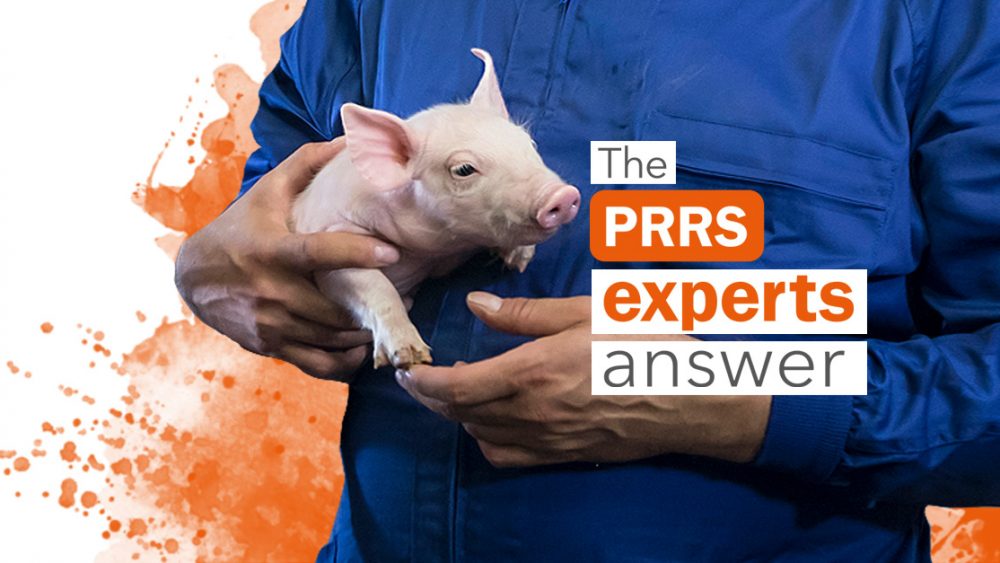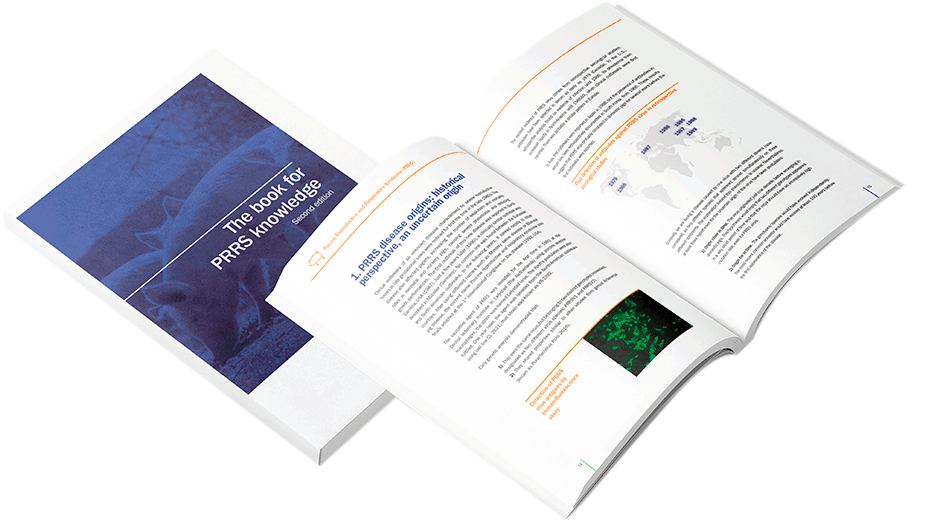A PRRS outbreak is causing 40% of stillborn piglets. Is it possible to administer a live vaccine to animals already infected to stop the piglet’s infection? Could a vaccine of this kind reduce the number of dead piglets and stop the transmission to new litters?
In this case, an outbreak of stillborn piglets (around 40%) is described, and it is suspected that the cause is PRRS.
When we ask for more information on the case, we are told:
-
- Most of the affected litters belong to first parity sows.
- No PCR diagnosis of PRRSV on deadborn piglets has been carried out.
- Gilts come from another farm, their health status regarding PRRS is unknown, and they are not vaccinated.
- The semen used for AI has an external origin.
- Most of the affected litters belong to first parity sows.
Vaccinating a newly infected animal with the PRRS field virus does not have practical advantages for the animal, because the immune system already has a strong antigen to process the answer needed. The difficulty does not lie in the individual animal, but on an animal population, because not all the animals become infected at the same time. The PRRS virus is not very contagious, and because of this, the contamination of all the sows on the farm with the field virus will take a long time if we leave the virus to circulate naturally. In these cases, the clinical symptomatology will go on until the last sow becomes immunocompetent against the virus. This can take several months or even years, when negative subpopulations appear on positive farms.
PRRSV-naive gilts are another source of active virus replication when they enter an unstable farm with an active virus circulation. In this case, a situation like the one described can appear. Nevertheless, to be sure, we must diagnose if the PRRSV is the agent responsible for the mortality of the piglets.
If the PRRSV diagnosis is confirmed in the piglets and the gilts that come from an external source, the next step is to reduce the virus circulation on the farm, mainly in the gilts, that may be where the virus proliferates.
In cases like this, we recommend vaccinating all the sows to induce some kind of immunisation against the PRRSV and to reduce the clinical symptoms in the sows NOT infected at the time of vaccination. We are not going to avoid the infection of new litters with the field virus, but we can reduce its negative impact and the clinical signs if there is an immunisation previous to the infection.
There is the risk of not achieving enough immunological protection against the field virus with some vaccines, but as of today there is not a technology that allows us to say, with confidence, which is the most effective vaccine for a certain farm. Even after sequencing the virus and choosing the vaccine with the highest homology degree, nothing guarantees us that it will be the most effective one on the farm.
The strategy that we use in clinical outbreaks like this (with a confirmed PRRS diagnosis) is:
- The vaccination of all the sows and boars on the farm with a live vaccine on the same day (we will vaccinate the most immunodepressed sows the following week: on the insemination/mating week and the farrowing week). The goal is to obtain a quick immune response against the PRRSV in all the sows in the group, and we expect a certain degree of cross-protection between the vaccine and the field strains. Revaccinate 4 weeks later with the same protocol.
- The gilts that enter the pregnancy stage must be well immunised and non-viraemic (PCR-negative to PRRS and IgG-positive). The vaccination and adaptation of viraemic animals on the farm and allowing enough time in quarantine until they do not excrete the virus (12 weeks is normally enough) are recommended. This is very important for the future control of PRRS on the farm.
- Buying PRRS-negative semen to inseminate the sows.
- Knowing if the virus is circulating in the nurseries. If there is circulation, implement biosecurity rules to reduce the transmission of the virus to the sow herd.
- After the second vaccination of the sows, evaluate if there are still viraemic piglets at birth. If this improves, we can keep the vaccination and adaptation programme only in the gilts in quarantine.
Summary:
Vaccinating the infected sows with a PRRS live vaccine does not seem to help to reduce the clinical signs. It normally reduces the clinical signs in sows when the vaccination is administered before the infection with the field virus. The non-immunised gilts are animals that can help in the replication of the virus on unstable positive farms, and because of this, the vaccination and adaptation before their introduction on the farm is recommended to reduce the clinical signs in these animals and to lower the circulation of the virus on the farm.
You can ask your own question! Visit Pig333.com and submit your question to our experts.

Universidade Lusófona de Humanidades e Tecnologias – Portugal




